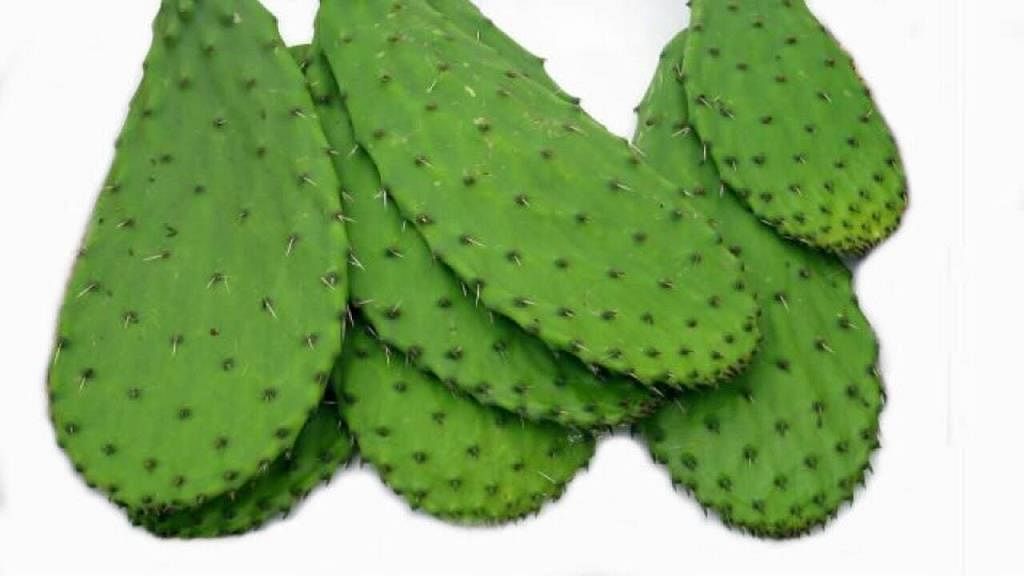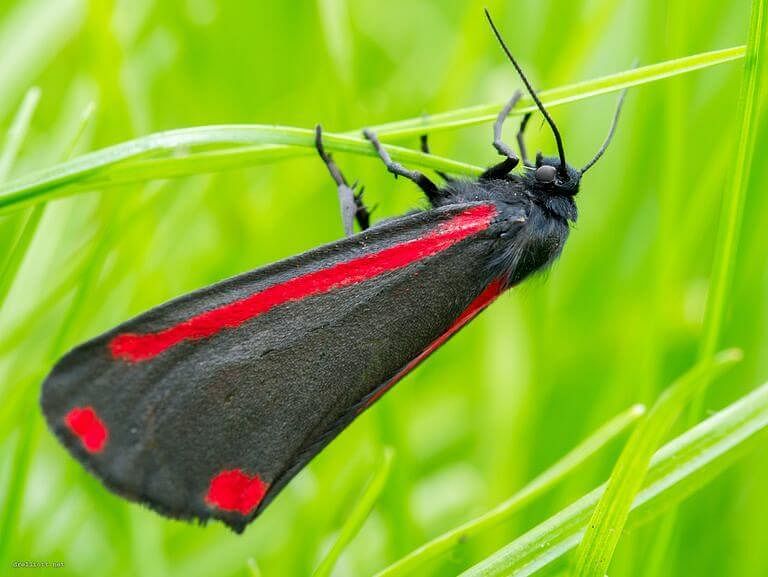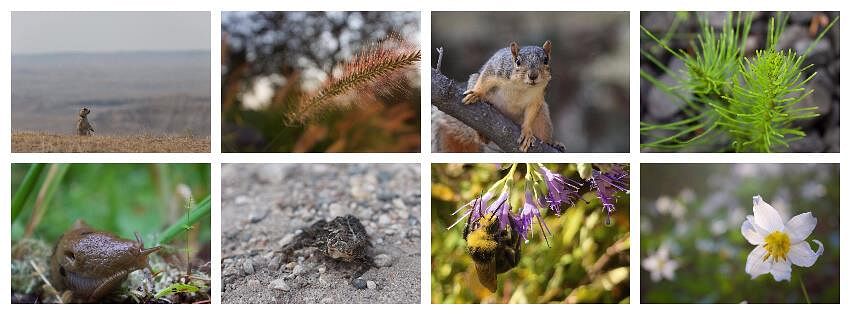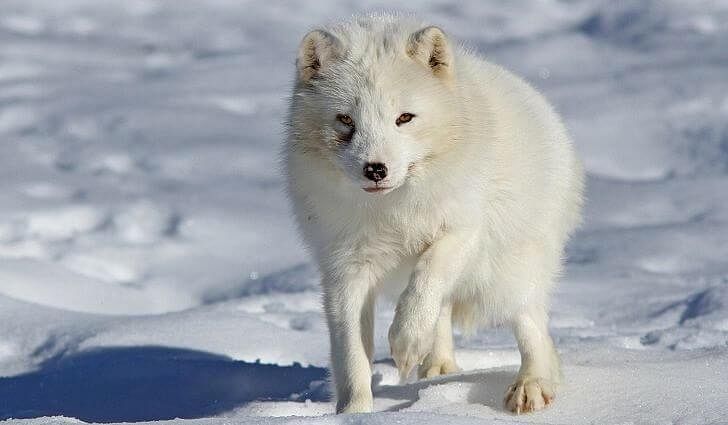NCERT Solutions Class 12 Biology Chapter 11 - Organisms & Populations
Q1: List the attributes that populations but not individuals possess.
Ans: A population can be defined as a group of individuals of the same species residing in a particular geographical area at a particular time and functioning as a unit. For example, all human beings living at a particular place at a particular time constitute the population of humans.
The main attributes or characteristics of a population residing in a given area are:
- Birth rate (Natality): It is the ratio of live births in an area to the population of an area. It is expressed as the number of individuals added to the population with respect to the members of the population.
- Death rate (Mortality): It is the ratio of deaths in an area to the population of an area. It is expressed as the loss of individuals with respect to the members of the population.
- Sex ratio: It is the number of males or females per thousand individuals.
- Age Distribution: It is the percentage of individuals of different ages in a given population. At any given time, the population is composed of individuals that are present in various age groups. The age distribution pattern is commonly represented through age pyramids.
- Population density: It is defined as the number of individuals of a population present per unit area at a given time.
Q2: If a population growing exponentially double in size in 3 years, what is the intrinsic rate of increase (r) of the population?
Ans: A population grows exponentially if sufficient amounts of food resources are available to the individual. Its exponential growth can be calculated by the following integral form of the exponential growth equation:
Nt = No ert
Where,
Nt = Population density after time t
NO = Population density at time zero
r = Intrinsic rate of natural increase
e = Base of natural logarithms (2.71828)
From the above equation, we can calculate the intrinsic rate of increase (r) of a population.
Now, as per the question,
Present population density = x
Then,
Population density after two years = 2x
t = 3 years
Substituting these values in the formula, we get:
⇒ 2x = x e3r
⇒ 2 = e3r
Applying log on both sides:
⇒ log 2 = 3r log e
Hence, the intrinsic rate of increase for the above illustrated population is 0.2311.
Q3: Name important defence mechanisms in plants against herbivores.
Ans: Several plants have evolved various mechanisms both morphological and chemical to protect themselves against herbivory.
a. Morphological defence mechanisms:
1. Cactus leaves (Opuntia) are modified into sharp spines (thorns) to deter herbivores from feeding on them. Fig: Cactus Leaves2. Sharp thorns along with leaves are present in Acacia to deter herbivores.
Fig: Cactus Leaves2. Sharp thorns along with leaves are present in Acacia to deter herbivores.
3. In some plants, the margins of their leaves are spiny or have sharp edges that prevent herbivores from feeding on them.
b. Chemical defence mechanisms:
1. All parts of Calotropis weeds contain toxic cardiac glycosides, which can prove to be fatal if ingested by herbivores.
2. Chemical substances such as nicotine, caffeine, quinine, and opium are produced in plants as a part of self-defence.
Q4: An orchid plant is growing on the branch of mango tree. How do you describe this interaction between the orchid and the mango tree?
Ans: An orchid growing on the branch of a mango tree is an epiphyte. Epiphytes are plants growing on other plants which however, do not derive nutrition from them. Therefore, the relationship between a mango tree and an orchid is an example of commensalisms, where one species gets benefited while the other remains unaffected. In the above interaction, the orchid is benefited as it gets support while the mango tree remains unaffected.
Q5: What is the ecological principle behind the biological control method of managing with pest insects?
Ans: The basis of various biological control methods is on the concept of predation. Predation is a biological interaction between the predator and the prey, whereby the predator feeds on the prey. Hence, the predators regulate the population of preys in a habitat, thereby helping in the management of pest insects.
Q6: Define population and community.
Ans:
- Population: A population can be defined as a group of individuals of the same species residing in a particular geographical area at a particular time and functioning as a unit. For example, all human beings living at a particular place at a particular time constitute the population of humans.
- Community: A community is defined as a group of individuals of different species, living within a certain geographical area. Such individuals can be similar or dissimilar, but cannot reproduce with the members of other species.
Q7: Define the following terms and give one example for each:
(a) Commensalism
(b) Parasitism
(c) Camouflage
(d) Mutualism
(e) Interspecific competition
Ans: (a) Commensalism: Commensalism is an interaction between two species in which one species gets benefited while the other remains unaffected. An orchid growing on the branches of a mango tree and barnacles attached to the body of whales are examples of commensalisms.
(b) Parasitism: It is an interaction between two species in which one species (usually smaller) gets positively affected, while the other species (usually larger) is negatively affected. An example of this is liver fluke. Liver fluke is a parasite that lives inside the liver of the host body and derives nutrition from it. Hence, the parasite is benefited as it derives nutrition from the host, while the host is negatively affected as the parasite reduces the host fitness, making its body weak.
(c) Camouflage: It is a strategy adapted by prey species to escape their predators. Organisms are cryptically coloured so that they can easily mingle in their surroundings and escape their predators. Many species of frogs and insects camouflage in their surroundings and escape their predators.
(d) Mutualism: It is an interaction between two species in which both species involved are benefited. For example, lichens show a mutual symbiotic relationship between fungi and blue green algae, where both are equally benefited from each other.
(e) Interspecific competition: It is an interaction between individuals of different species where both species get negatively affected. For example, the competition between flamingos and resident fishes in South American lakes for common food resources i.e., zooplankton.
Q8: With the help of suitable diagram describe the logistic population growth curve.
Ans: The logistic population growth curve is commonly observed in yeast cells that are grown under laboratory conditions. It includes five phases: the lag phase, positive acceleration phase, exponential phase, negative acceleration phase, and stationary phase.
- Lag phase: Initially, the population of the yeast cell is very small. This is because of the limited resource present in the habitat.
- Positive acceleration phase: During this phase, the yeast cell adapts to the new environment and starts increasing its population. However, at the beginning of this phase, the growth of the cell is very limited.
- Exponential phase: During this phase, the population of the yeast cell increases suddenly due to rapid growth. The population grows exponentially due to the availability of sufficient food resources, constant environment, and the absence of any interspecific competition. As a result, the curve rises steeply upwards.
- Negative acceleration phase: During this phase, the environmental resistance increases and the growth rate of the population decreases. This occurs due to an increased competition among the yeast cells for food and shelter.
- Stationary phase: During this phase, the population becomes stable. The number of cells produced in a population equals the number of cells that die. Also, the population of the species is said to have reached nature’s carrying-capacity in its habitat.
 A Verhulst − pearl logistic curve is also known as an S-shaped growth curve.
A Verhulst − pearl logistic curve is also known as an S-shaped growth curve.
Q9: Select the statement which explains best parasitism.
(a) One organism is benefited.
(b) Both the organisms are benefited.
(c) One organism is benefited, other is not affected.
(d) One organism is benefited, other is affected.
Ans: (d) One organism is benefited, other is affected. Parasitism is an interaction between two species in which one species (parasite) derives benefit while the other species (host) is harmed. For example, ticks and lice (parasites) present on the human body represent this interaction where in the parasites receive benefit (as they derive nourishment by feeding on the blood of humans). On the other hand, these parasites reduce host fitness and cause harm to the human body.
Q10: List any three important characteristics of a population and explain.
Ans: A population can be defined as a group of individuals of the same species, residing in a particular geographical area at a particular time and functioning as a unit. For example, all human beings living at a particular place at a particular time constitute the population of humans.
Three important characteristics of a population are:
1. Birth rate (Natality): It is the ratio of live births in an area to the population of an area. It is expressed as the number of individuals added to the population with respect to the members of the population.
2. Death rate (Mortality): It is the ratio of deaths in an area to the population of an area. It is expressed as the loss of individuals with respect to the members of the population.
3. Age Distribution: It is the percentage of individuals of different ages in a given population. At any given time, a population is composed of individuals that are present in various age groups. The age distribution pattern is commonly represented through age pyramids.
Old Ncert Solution
Q1: How is diapause different from hibernation?
Ans: Diapause is a stage of suspended development to cope with unfavourable conditions. Many species of Zooplankton and insects exhibit diapause to tide over adverse climatic conditions during their development. Fig: Diapause
Fig: Diapause
Hibernation or winter sleep is a resting stage where in animals escape winters (cold) by hiding themselves in their shelters. They escape the winter season by entering a state of inactivity by slowing their metabolism. The phenomenon of hibernation is exhibited by bats, squirrels, and other rodents.
Q2: If a marine fish is placed in a fresh water aquarium, will the fish be able to survive? Why or why not?
Ans: If a marine fish is placed in a fresh water aquarium, then its chances of survival will diminish. This is because their bodies are adapted to high salt concentrations of the marine environment.
In fresh water conditions, they are unable to regulate the water entering their body (through osmosis). Water enters their body due to the hypotonic environment outside. This results in the swelling up of the body, eventually leading to the death of the marine fish.
Q3: Define phenotypic adaptation. Give one example.
Ans: Phenotypic adaptation involves changes in the body of an organism in response to genetic mutation or certain environmental changes. These responsive adjustments occur in an organism in order to cope with environmental conditions present in their natural habitats. Fig: Phenotypic adaptation
Fig: Phenotypic adaptation
For example, desert plants have thick cuticles and sunken stomata on the surface of their leaves to prevent transpiration. Similarly, elephants have long ears that act as thermo regulators.
Q4: Most living organisms cannot survive at temperature above 45°C°. How are some microbes able to live in habitats with temperatures exceeding 100°C?
Ans: Archaebacteria (Thermophiles) are ancient forms of bacteria found in hot water springs and deep sea hydrothermal vents. They are able to survive in high temperatures (which far exceed 100°C) because their bodies have adapted to such environmental conditions. These organisms contain specialized thermo-resistant enzymes, which carry out metabolic functions that do not get destroyed at such high temperatures.
Q5: Distinguish between the following:
(a) Hibernation and Aestivation
(b) Ectotherms and Endotherms
Ans: (a) Hibernation and Aestivation
(b) Ectotherms and Endotherms
Q6: Write a short note on
(a) Adaptations of desert plants and animals
(b) Adaptations of plants to water scarcity
(c) Behavioural adaptations in animals
(d) Importance of light to plants
(e) Effect of temperature or water scarcity and the adaptations of animals.
Ans: (a) Adaptations of desert plants and animals:
- Adaptations of desert plants: Plants found in deserts are well adapted to cope with harsh desert conditions such as water scarcity and scorching heat. Plants have an extensive root system to tap underground water. They bear thick cuticles and sunken stomata on the surface of their leaves to reduce transpiration. In Opuntia, the leaves are entirely modified into spines and photosynthesis is carried out by green stems. Desert plants have special pathways to synthesize food, called CAM (C4 pathway). It enables the stomata to remain closed during the day to reduce the loss of water through transpiration.
- Adaptations of desert animals: Animals found in deserts such as desert kangaroo rats, lizards, snakes, etc. are well adapted to their habitat. The kangaroo rat found in the deserts of Arizona never drinks water in its life. It has the ability to concentrate its urine to conserve water. Desert lizards and snakes bask in the sun during early morning and burrow themselves in the sand during afternoons to escape the heat of the day. These adaptations occur in desert animals to prevent the loss of water.
(b) Adaptations of plants to water scarcity:
- Plants found in deserts are well adapted to cope with water scarcity and scorching heat of the desert. Plants have an extensive root system to tap underground water. They bear thick cuticles and sunken stomata on the surface of their leaves to reduce transpiration.
- In Opuntia, the leaves are modified into spines and the process of photosynthesis is carried out by green stems. Desert plants have special pathways to synthesize food, called CAM (C4 pathway). It enables their stomata to remain closed during the day to reduce water loss by transpiration.
(c) Behavioural adaptations in animals:
- Certain organisms are affected by temperature variations. These organisms undergo adaptations such as hibernation, aestivation, migration, etc. To escape environmental stress to suit their natural habitat. These adaptations in the behaviour of an organism are called behavioural adaptations. For example, ectothermal animals and certain endotherms exhibit behavioral adaptations.
- Ectotherms are cold blooded animals such as fish, amphibians, reptiles, etc. Their temperature varies with their surroundings. For example, the desert lizard basks in the sun during early hours when the temperature is quite low.
- However, as the temperature begins to rise, the lizard burrows itself inside the sand to escape the scorching sun. Similar burrowing strategies are exhibited by other desert animals.
- Certain endotherms (warm-blooded animals) such as birds and mammals escape cold and hot weather conditions by hibernating during winters and aestivating during summers. They hide themselves in shelters such as caves, burrows, etc. to protect against temperature variations.
(d) Importance of light to plants:
- Sunlight acts as the ultimate source of energy for plants. Plants are autotrophic organisms, which need light for carrying out the process of photosynthesis. Light also plays an important role in generating photoperiodic responses occurring in plants.
- Plants respond to changes in intensity of light during various seasons to meet their photoperiodic requirements for flowering. Light also plays an important role in aquatic habitats for vertical distribution of plants in the sea.
(e) Effects of temperature or water scarcity and the adaptations of animals:
- Temperature is the most important ecological factor. Average temperature on the Earth varies from one place to another. These variations in temperature affect the distribution of animals on the Earth.
- Animals that can tolerate a wide range of temperature are called eurythermals. Those which can tolerate a narrow range of temperature are called stenothermal animals. Animals also undergo adaptations to suit their natural habitats.
- For example, animals found in colder areas have shorter ears and limbs that prevent the loss of heat from their body. Also, animals found in Polar regions have thick layers of fat below their skin and thick coats of fur to prevent the loss of heat.
- Some organisms exhibit various behavioural changes to suit their natural habitat. These adaptations present in the behaviour of an organism to escape environmental stresses are called behavioural adaptations.
- For example, desert lizards are ectotherms. This means that they do not have a temperature regulatory mechanism to escape temperature variations.
- These lizards bask in the sun during early hours when the temperature is quite low. As the temperature begins to increase, the lizard burrows itself inside the sand to escape the scorching sun. Similar burrowing strategy is seen in other desert animals.
- Water scarcity is another factor that forces animals to undergo certain adaptations to suit their natural habitat.
- Animals found in deserts such as desert kangaroo rats, lizards, snakes, etc. are well adapted to stay in their habitat. The kangaroo rat found in the deserts of Arizona never drinks water in its life. It has the ability to concentrate its urine to conserve water.
- Desert lizards and snakes bask in the sun during early morning and burrow in the sand as the temperature rises to escape the heat of the day. Such adaptations can be seen to prevent the loss of water.
Q7: List the various abiotic environmental factors.
Ans: All non- living components of an ecosystem form abiotic components. It includes factors such as temperature, water, light, and soil.
Q8: Give an example for:
(a) An endothermic animal
(b) An ectothermic animal
(c) An organism of benthic zone
Ans: (a) Endothermic animal: Birds such as crows, sparrows, pigeons, cranes, etc. and mammals such as bears, cows, rats, rabbits, etc. are endothermic animals.
 Fig: Endothermic animal(b) Ectothermic animal: Fishes such as sharks, amphibians such as frogs, and reptiles such as tortoise, snakes, and lizards are ectothermic animals.
Fig: Endothermic animal(b) Ectothermic animal: Fishes such as sharks, amphibians such as frogs, and reptiles such as tortoise, snakes, and lizards are ectothermic animals.
(c) Organism of benthic zone: Decomposing bacteria is an example of an organism found in the benthic zone of a water body.
|
78 videos|276 docs|174 tests
|
FAQs on NCERT Solutions Class 12 Biology Chapter 11 - Organisms & Populations
| 1. What is the difference between an organism and a population? |  |
| 2. How do organisms interact with their environment? |  |
| 3. What is the importance of studying populations in ecology? |  |
| 4. How do populations change over time? |  |
| 5. What are some examples of population dynamics in nature? |  |

|
Explore Courses for NEET exam
|

|


















